On View: September 23 – October 15, 2021
Wendy Kawabata is the recipient of a Pollock-Krasner Foundation Grant and is represented by Sanderson Contemporary Gallery in Auckland, New Zealand. She has presented her work in numerous solo and group exhibitions at venues including The Carriageworks, Sydney, Australia; The Corban Estate Arts Centre, Auckland, New Zealand; The Texas State University Art Gallery, San Marcos, TX; the Fed Galleries, Kendall College of Art and Design, Grand Rapids, MI; and the Center for Book and Paper Arts, Chicago, IL; and has participated in residencies in Iceland and Michigan. Kawabata also curated the group exhibition Material Slip (UHM Commons Gallery and the University of Wyoming Art Museum). She has received recognition from national and international publications including Art in America, Modern Painters, New Yorker, Artweek, Aucklander, and NO Magazine. Her work is featured in the books 20/20: Twenty Artists, Twenty Writers, One New Zealand Gallery (Sanderson Contemporary, Auckland, NZ); The Artists: 21 Practitioners in New Zealand Contemporary Art (Beatnik Publishing, Auckland, NZ); and PromptPress 1 (PromptPress, Iowa City); and is in the collection of the Hawai’i State Art Museum.
Artist Statement
Grow in Light began during a residency on the Arctic Circle in Iceland. In that time I both acclimated to and resisted the patterns of near constant daylight, and a kind of life close to the bone. I took as my starting point the endless fields of the mountain Spákonufell, pervasive handiwork, and the vulnerability of the land to aluminum smelting. I traveled to this less inhabited corner hoping to hear more clearly amid the quiet. Quiet was found, but tempered by the resonance of land as potential commodity. The incongruity between wild nature and industry in Icelandʼs highlands left me feeling spare and dislocated. As always with travel, I went looking for something, and found something else. These flowers are not something else, or somewhere else. While borne from a search for the wild, they have become routine and domestic. In this way they become the insistence of interior experiences – the constant pressure of something hidden but not forgotten.
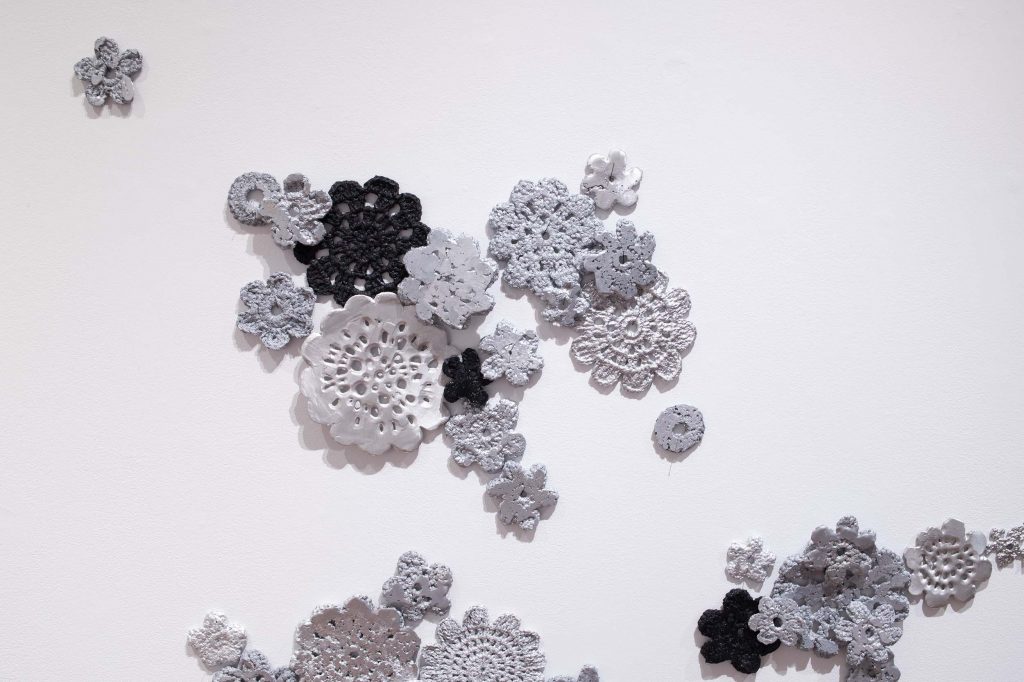
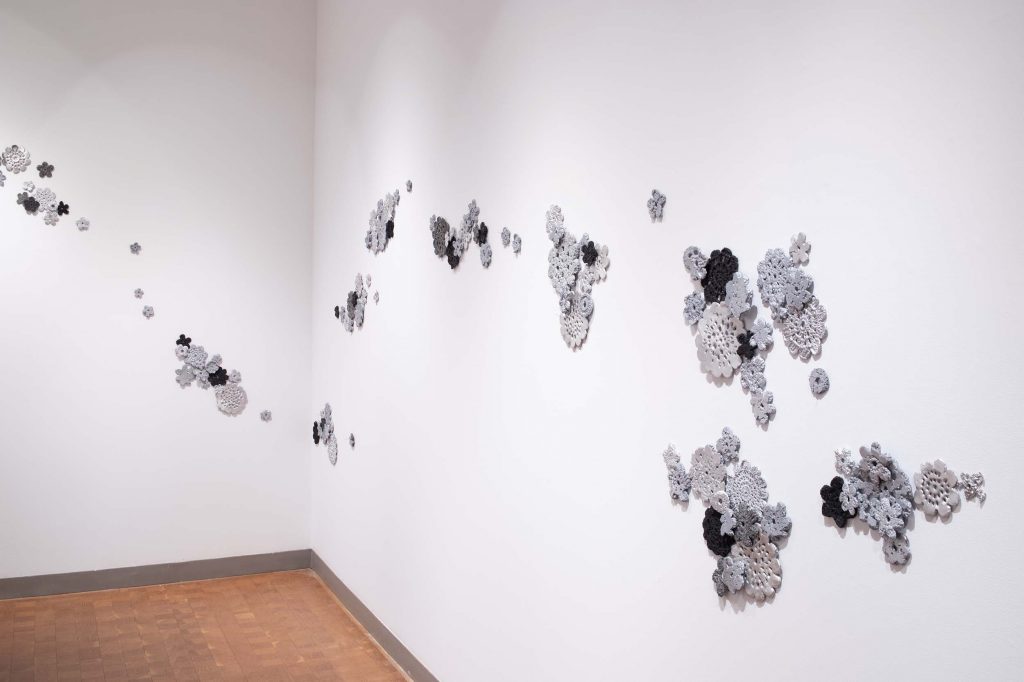
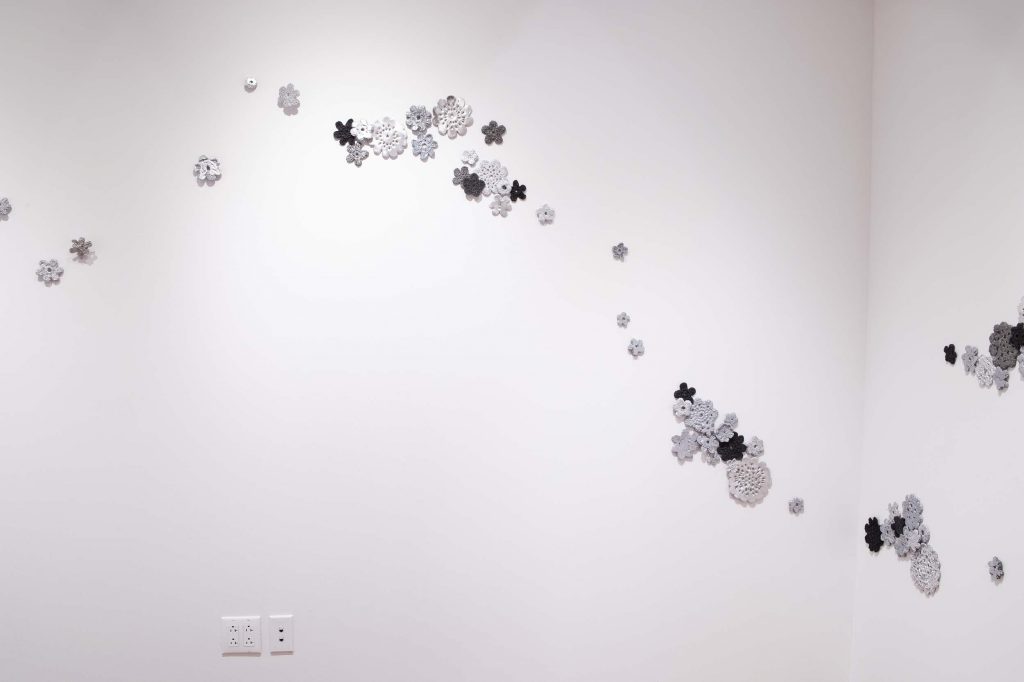
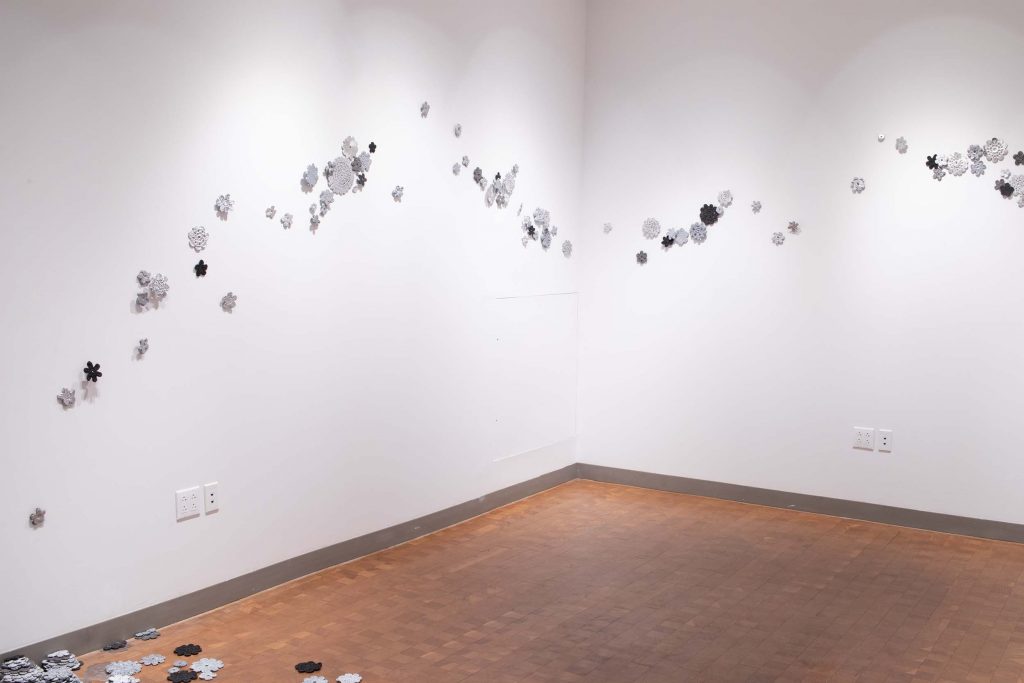
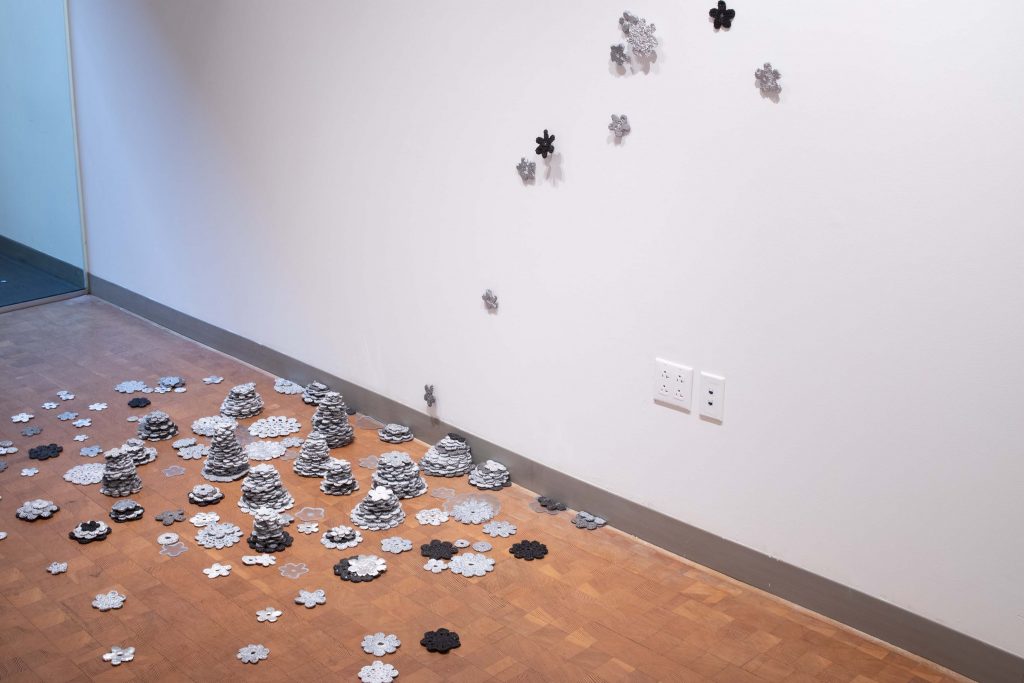
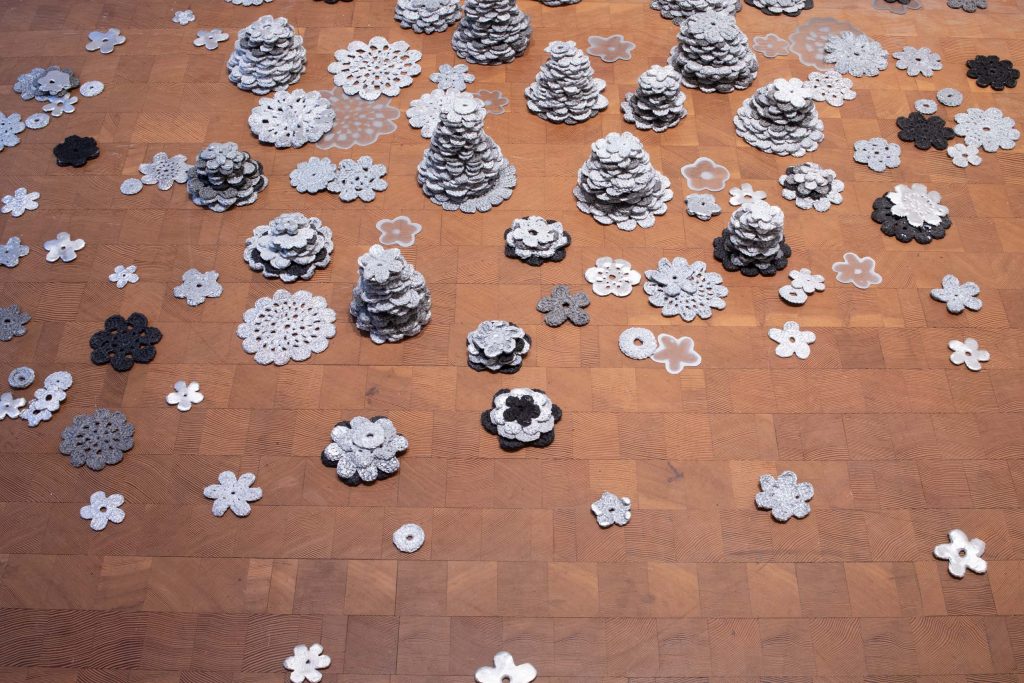
You must be logged in to post a comment.